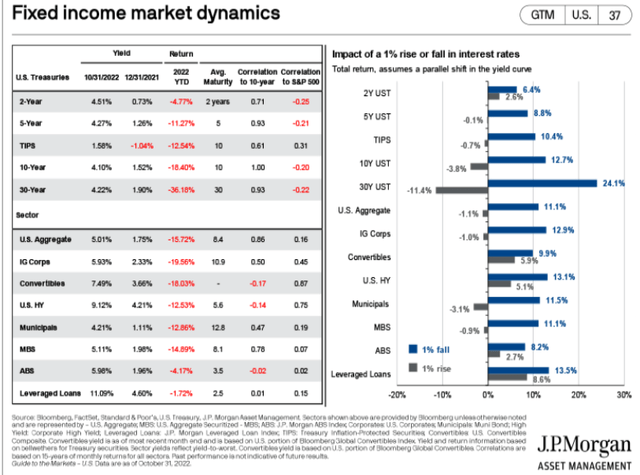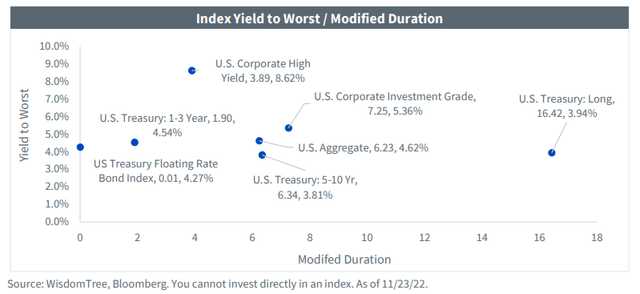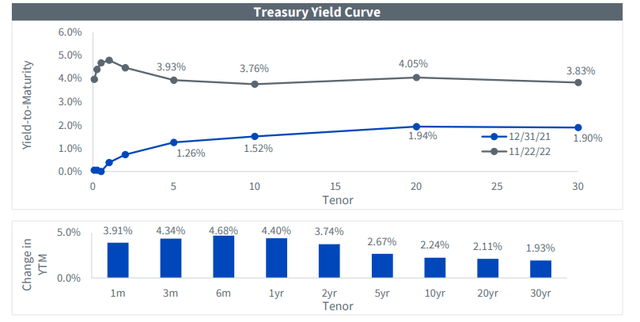BSV: A 4.8% Yield With Limited Risk. A Great Option Now, But Not Necessarily Next Year
DNY59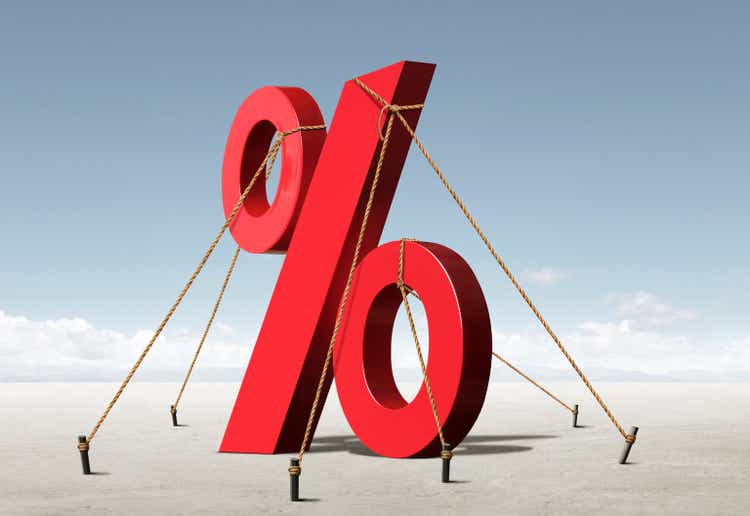
There’s yield to be had for investors concerned about stock market volatility and taking too much interest rate or credit risk. One fund I assert is a solid choice for those wanting a little extra yield versus strictly a Treasury-focused portfolio on the short-end of the duration curve is the Vanguard Short-Term Bond ETF (NYSEARCA:BSV).
BSV invests in U.S. government, high-quality (investment-grade) corporate, and investment-grade international dollar-denominated bonds. It is a passively-managed short-term government and corporate credit ETF focusing on the one to five-year maturity spectrum. BSV features an expense ratio of just 0.04% and has a high $37.5 billion in assets under management, according to Vanguard.
While it features a one-year total return loss of 5.7%, that came when the starting yield was not far from 1% and a historic rise in rates then took place. For perspective, a full percentage point rise in market rates would still result in a positive return over a one-year period of 2.2% on BSV – about the one-year expected inflation rate.
Fixed Income Risk Should Rates Rise
So, you get a mix of both Treasurys and high-quality corporates; the former yields about 4.3% while the latter yields about 5.3%. Combine the two, and you get an idea of what you will earn on BSV.
One of my go-to charts when assessing the fixed-income space is the below view from WisdomTree ETFs.
Bond Market Yields As of Nov. 23, 2022
WisdomTree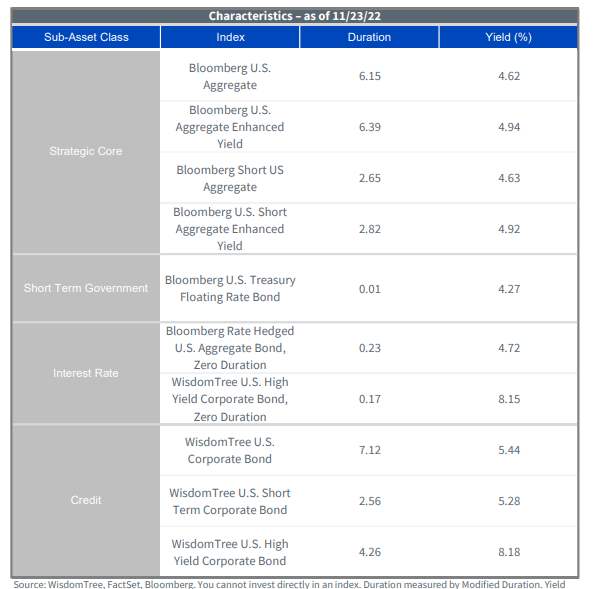
Investors should always look to a bond fund’s current yield to maturity or yield to worst to get the most accurate gauge of the expected annual return. BSV’s YTM is 4.8% as of October 31, 2022, according to Vanguard.
With rates not too much changed on the short end of the Treasury curve and corporate credit spreads about steady recently, that is about where BSV still yields today.
One thing to consider when looking ahead is what a plain money market mutual fund will yield in the coming weeks and months as the Federal Reserve continues on its rate-hiking mission. Traders expect a 0.5 percentage point hike at the early December meeting while additional policy rate increases are seen in early 2023.
All told, the Fed Funds futures markets prices in a terminal, or peak, rate near 5.05% come the second quarter of next year. By that time, parking cash in a money market will actually yield more than BSV’s YTM, potentially. Of course, if rates fall as a result of recession fears, then BSV’s portfolio of bonds will provide some price appreciation, too.
Fed Fund Futures Expect A Rate > 5%
CME Group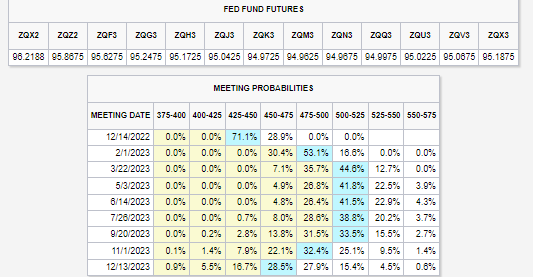
“There is no alternative” is clearly dead. RIP to TINA. Investors can now pick their poison in the bond markets depending on how much credit and interest-rate risk they want to take.
I recommend favoring the short end of the duration range since there is hardly a yield premium going out further. Also, a recession and stock market volatility would likely lead to NAV losses in corporates, particularly with high-yield junk debt that has a high correlation with the S&P 500.
Fixed Income YTW/Modified Duration View
Specifically, the one-to-five-year range looks best in my eye based on the shape of the yield curve which is the most inverted since about 1980. Without a major spread between Treasurys and corporates, I suggest using the Treasury yield curve to get a sense of where to get exposure to a portfolio of T-bills, T-notes, and investment-grade bonds.
Sharply Inverted Yield Curve
The Bottom Line
BSV is a good option for risk-conscious investors who also want to earn a high yield on their savings or even broad bond allocation. Its limited duration and low credit risk make for a good mix with a YTM above what you would currently get on a money market.
Next year, though, investors should consider simply owning a money market mutual fund since the benchmark Fed rate will likely be north of 5%.



